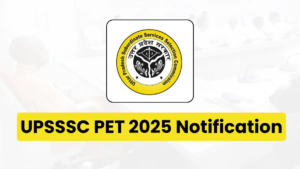Budget 2025: Navigating the Economic Landscape and Shaping India’s Future
The annual unveiling of the Indian Union Budget is a pivotal event, a moment where the nation holds its breath, anticipating the government’s roadmap for the coming fiscal year. Budget 2025 is expected to be no different, carrying the weight of expectations as India navigates a complex global economic landscape while simultaneously striving to address its unique developmental challenges. The discussions surrounding this budget are likely to center around three key pillars: tax reforms, infrastructure spending, and social welfare schemes, each playing a crucial role in shaping India’s economic trajectory.

Tax Reforms: Balancing Revenue and Growth
Tax reforms are often a contentious but necessary component of any budget. The government faces the delicate balancing act of boosting revenue collection while also ensuring that the tax burden doesn’t stifle economic growth. Discussions around Budget 2025 will likely involve streamlining the tax system, perhaps simplifying the Goods and Services Tax (GST) structure further and addressing any remaining anomalies. Direct tax reforms, including potential adjustments to income tax slabs and deductions, will also be closely watched. The aim will be to create a tax regime that is both efficient and equitable, encouraging compliance while also incentivizing investment and savings. The government will need to carefully consider the impact of these reforms on different segments of the population, ensuring that they do not disproportionately affect the middle class or small businesses.
Infrastructure Spending: Fueling Economic Growth
Infrastructure spending is the engine that drives economic growth, creating jobs and improving the overall quality of life. Budget 2025 is expected to maintain a strong focus on infrastructure development, with increased allocations likely for key sectors like transportation, energy, and communication. Investments in railways, roads, and airports are crucial for improving connectivity and facilitating trade. Renewable energy projects will likely receive further impetus, aligning with India’s commitment to sustainable development. The budget may also unveil new initiatives aimed at developing digital infrastructure, bridging the digital divide and promoting innovation. Efficient execution of these projects is as important as the allocations themselves, and the budget may outline measures to ensure timely completion and avoid cost overruns.
Social Welfare Schemes: Strengthening the Safety Net
Social welfare schemes form the bedrock of social security in India, providing a safety net for the most vulnerable sections of society. Budget 2025 will likely address the funding and implementation of various social welfare programs, including those related to education, healthcare, and rural development. Discussions will center around strengthening existing schemes like the Mahatma Gandhi National Rural Employment Guarantee Act (MGNREGA) and the National Health Mission, ensuring that they reach the intended beneficiaries and achieve their objectives. The government may also introduce new initiatives aimed at addressing specific social challenges, such as poverty, unemployment, and inequality. Striking a balance between fiscal prudence and social responsibility will be a key challenge, ensuring that these schemes are both effective and sustainable in the long run.
Beyond the Pillars: Addressing Other Critical Issues
Beyond these three key areas, Budget 2025 will also need to address other critical issues, such as agricultural reforms, promoting manufacturing, and boosting exports. The global economic climate, with its uncertainties and challenges, will require a pragmatic and adaptable approach. The budget will need to be forward-looking, anticipating future trends and positioning India to capitalize on emerging opportunities.
Conclusion: A Roadmap for India’s Future
In conclusion, Budget 2025 holds immense significance for India’s economic future. The discussions surrounding tax reforms, infrastructure spending, and social welfare schemes will shape the nation’s trajectory for years to come. The government faces the challenge of balancing competing priorities, stimulating growth while also ensuring social equity and fiscal responsibility. The budget will be closely scrutinized by economists, policymakers, and the general public alike, as it will provide a crucial insight into the government’s vision for a prosperous and inclusive India.










